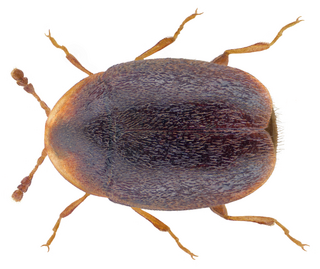
Corylophidae is a family of minute hooded beetles, sometimes called minute fungus beetles, in the superfamily Coccinelloidea. There are about 18 genera and at least 120 described species in Corylophidae. They feed on microfungi such as molds, and are often found associated with bark, as well as in leaf litter and other decaying vegetation.

The Donaciinae are a subfamily of the leaf beetles, or Chrysomelidae, characterised by distinctly long antennae. They are found in mainly the Northern Hemisphere, with some species found in the Southern Hemisphere.
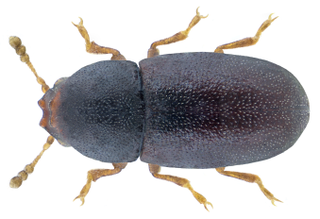
Strigocis is a genus of minute tree-fungus beetles in the family Ciidae. There are at least five described species in Strigocis.

Elaphropus is a genus of ground beetles in the family Carabidae. There are at least 370 described species in Elaphropus.

Conotelus is a genus of sap-feeding beetles in the family Nitidulidae. There are at least four described species in Conotelus.
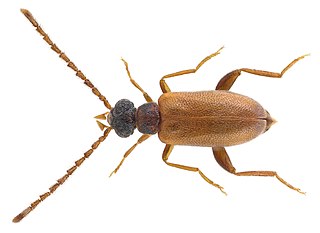
Euglenes is a genus of ant-like leaf beetles in the family Aderidae. There are about five described species in Euglenes.

Eutrichapion is a genus of pear-shaped weevils in the family of beetles known as Brentidae. There are about eight described species in Eutrichapion.

Habrocerus is a genus of rove beetles in the family Staphylinidae. There are about eight described species in Habrocerus.

Myllocerus is a genus of oriental broad-nosed weevils in the beetle family Curculionidae. There are at least 330 described species in Myllocerus.
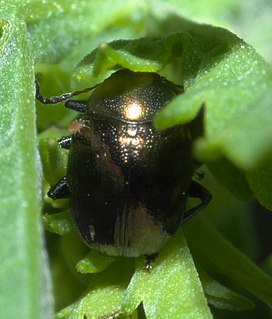
Eumolpini is a tribe of leaf beetles in the subfamily Eumolpinae. It is the largest tribe in the subfamily, with approximately 170 genera found worldwide. Members of the tribe almost always have a longitudinal median groove on the pygidium, which possibly helps to keep the elytra locked at rest. They also generally have a subglabrous body, as well as appendiculate pretarsal claws.
Glyptoscelis juniperi is a species of leaf beetle. It is found in California in the United States.
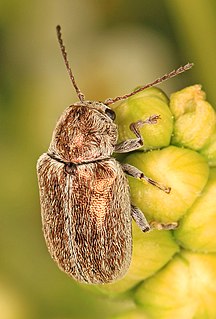
Glyptoscelis is a genus of leaf beetles in the subfamily Eumolpinae. There are 38 species of Glyptoscelis described from North, Central and South America. There are also three species of Glyptoscelis known from the West Indies, though they are wrongly placed in the genus. In addition, a single species was described from Hunan, China in 2021.
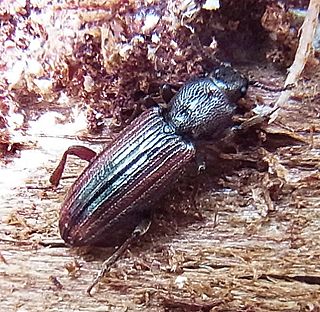
Bothrideres is a genus of dry bark beetles in the family Bothrideridae. There are about 13 described species in Bothrideres.
Glyptoscelis alternata is a species of leaf beetle. It is found in the western United States.
Glyptoscelis illustris is a species of leaf beetle. Its range spans from California to Oregon in the United States.
Glyptoscelis prosopis is a species of leaf beetle. Its range spans from southern Texas to Mexico and Central America. It was first described by the American entomologist Charles Frederic August Schaeffer in 1905.
Glyptoscelis pubescens, known generally as the hairy leaf beetle or pine chrysomelid, is a species of leaf beetle. It is found in eastern North America. It is a potential pest of pine trees.
Glyptoscelis albida is a species of leaf beetle. It is found in western North America.
Glyptoscelis cryptica is a species of leaf beetle. It is found in the central United States.
Glyptoscelis squamulata, the grape bud beetle, is a leaf beetle. The species was first described by George Robert Crotch in 1873. It is found in the western United States.











